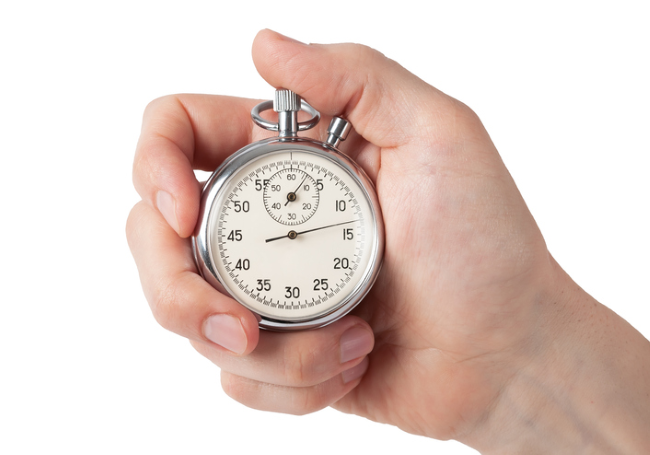
By Larry Mogelonsky, MBA, P. Eng. (www.hotelmogel.com)
While you may know your operations so thoroughly that you can trust your intuition to prudently guide your next move, we have now found ourselves in the age of measurement and analytics, letting us fall back on the data to make sound inferences to hone each and every task.
Just as you would evaluate your rooms in terms of RevPAR or your guests in terms of RevPAG, there’s another metric for your housekeeping department that can help give a reliable snapshot of the current state and where improvements are needed. As many executive housekeepers and management companies that already use this calculation can tell you, by looking at it in terms of minutes per occupied room (MinPOR), you can then use this figure as a means to curb salaried labor costs.
While I’ve long since known about this specific methodology, I was inspired to revisit it after seeing all the new housekeeping optimization and training platforms now available. Without going too far off topic by discussing any particular vendor, the first matter to discuss is why this metric is so important.
Playing with the Numbers
Plugging in some actual numbers helps to illustrate how MinPOR can best be leveraged. However, as star ratings affect brand standards and what’s involved in cleaning any individual room or suite according to SOPs– and not to mention that there’s a vast spectrum of property sizes – let’s use ranges instead of definite integers for the calculations below.
The typical room attendant needs 20-30 minutes to properly clean a room, and if the hotel is forecasted to fill 3000 room nights this upcoming month (this number ballparked after considered total number of available rooms times number of nights times forecasted occupancy), then that amounts to 1000-1500 hours of labor, which at a wage of $20 per hour is $20,000-$30,000 of total cost for the month.
For reference, this hourly pay was used because it’s a nice, round figure, although actual compensation can be even higher. Wages, of course, depend on numerous factors such as minimum wage regulations for a given state or province, union stipulations (which also affect how credits are disbursed and how many credits a housekeeper is allowed to collect during a given shift), general labor supply in a territory and many others.
Where MinPOR becomes instrumental for cost savings is when you actively try to reduce this metric in order to subsequently shave hours off of total labor required. In this case, finding ways to bring this hotel’s MinPOR down by only two minutes would result in 100 hours of labor, or $2,000 (based upon the rounded $20 per hour wage), saved for the upcoming month alone.
While not earth-shattering, this ‘one hundred hours’ could nevertheless represent several entire shifts no longer necessary for that month. Gaining that sort of flexibility in time management can result in, for instance, not having to scramble when short-staffed, not having to dip into any particular staff member’s overtime wage allotment and not having to double-shift someone in order to compensate for another associate on sick leave.
Such flexibility also has a softer advantage in that it can increase overall team morale, and thus help to prevent high turnover, because employees don’t feel overworked and there’s enough buffer so they can take more time off when it best suits them. Then when you utilize housekeeping management software, you can merge your MinPOR calculations in with other means of heightened productivity such as more efficient room prioritizing and faster coordination with the designated room inspector.
How to Reduce MinPOR
With labor as the costliest factor in cleaning a room, shaving even a single minute off your property’s MinPOR is a big win. When first investigating your options in this regard, I would advise setting up a mock guestroom or taking an active role in supervising the cleaning of a room so that every action can be recorded and every sequence of movements appraised.
What specific aspects of the room are taking the most time to clean? How many times does the room attendant have to walk back to the cart to grab another item? Is that the fastest technique for dressing the bed? Why does that type of shower take so long to properly clean?
Asking these sorts of questions – both large and small – help to break down the procedure in its constituent parts so that you can find what the biggest obstacles are. Oftentimes, the solution will be rather straightforward such as reducing the number of cleaning products used by housekeepers so they have to walk back to the cart as frequently and so they aren’t carrying as much in the first place.
Other times, though, the best answer has nothing to do with the room attendants themselves and lies in the replacing a few of the soft and hard goods. This, of course, will be different for each property, and it may require some difficult decisions as to whether a certain room feature is worth keeping relative to the effort it takes to clean. To help make these sorts of verdicts, you can weigh your hourly savings derived from the lowered MinPOR against the breakeven point for any capital expenditures.
Training is Critical
One drawback of attempting to derive cost savings purely from a MinPOR point of view is that it may result in many room attendants feeling as though they have a noose around their necks. Feeling the pressure to meet a specified time allotment per room, they may start cutting corners and fail to address all SOPs or start using improper cleaning techniques and accrue chronic injuries as a result.
While both aren’t desirable, the former is cause for particular concern because it may directly lead to lower guest satisfaction or, worse, a guest posting a negative comment about room cleanliness on a website like TripAdvisor. As you well know, negative review scores can have substantial ripple effects in terms of how many future customers book with you and how your brand is perceived, so this is something that must be addressed from the outset of any MinPOR discussions. Chronic or musculoskeletal injuries, on the other hand, are more of a lurking, long-term issue, but still one to be fully cognizant of such illnesses may result in disability leave, lower morale or greater turnover.
For all such drawbacks, you must address each with specific and ongoing training. The adage of “You can’t teach an old dog new tricks” has a lot of truth to it here in that, once habits have formed, it takes a sizably greater commitment to rewrite those movement patterns or behaviors.
Hence, no changes to the room cleaning procedure should be executed without a program in place for properly retraining all team members along with a system of documentation and periodic reevaluation. Luckily, technology is to the rescue, specifically in the form of automated training programs that can cover the basics so you don’t have to commit most of a supervisor or manager’s time to oversee these efforts.
Ultimately, though, if you are in fact able to setup a comprehensive training program that works in coordination with any activities designed to decrease MinPOR, then not only will you be able to realize significant cost savings, but you will mitigate any inherent and hidden expenses such as increased onboarding costs from higher turnover rates. As well, evaluating the housekeeping department solely in terms of this metric will give you optics to see what’s truly meaningful to the guestroom experience to guide what new or branded additions are actually worthwhile.
This article may not be reproduced without the expressed permission of the author.
Editor’s note: To discuss business challenges or speaking engagements please contact Larry directly.


